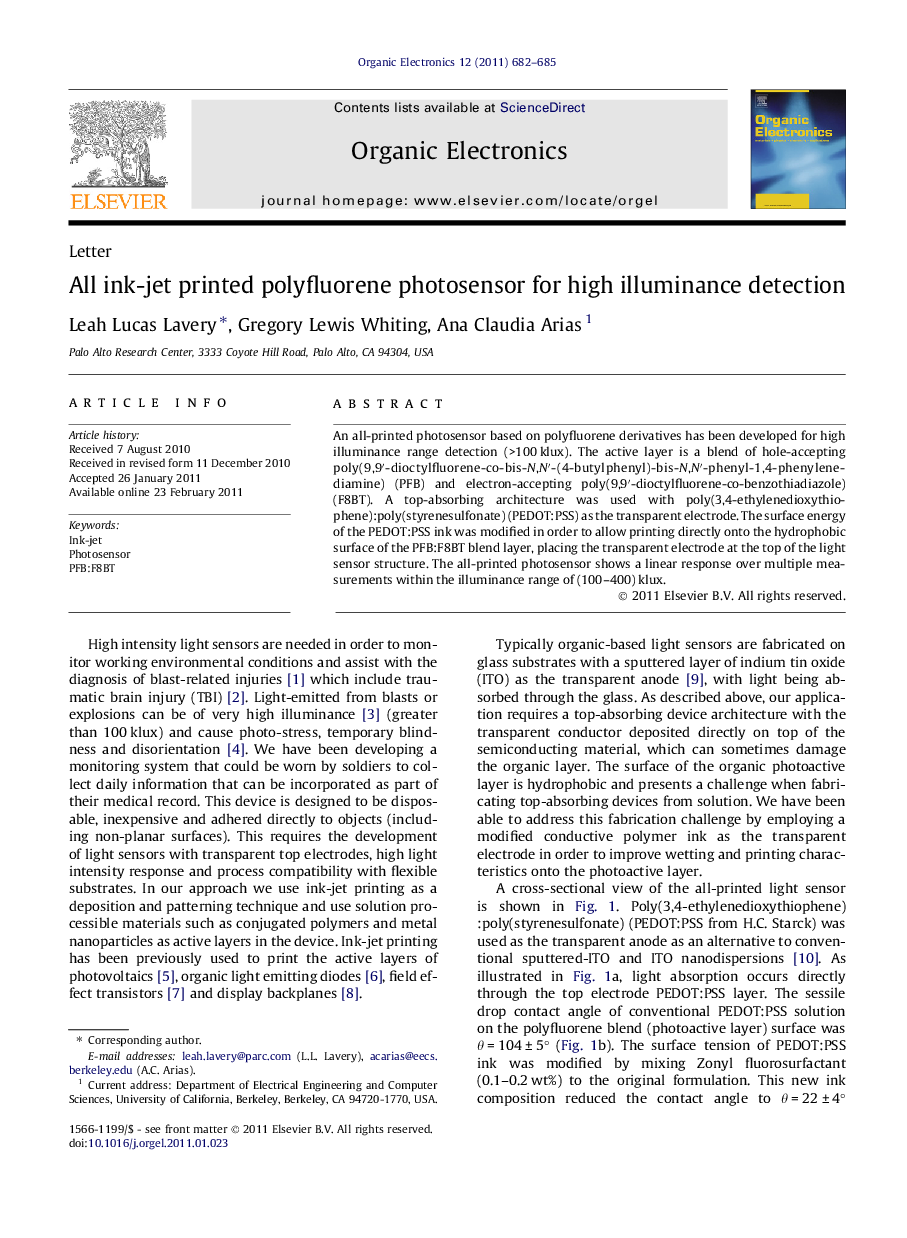| Article ID | Journal | Published Year | Pages | File Type |
|---|---|---|---|---|
| 1265443 | Organic Electronics | 2011 | 4 Pages |
An all-printed photosensor based on polyfluorene derivatives has been developed for high illuminance range detection (>100 klux). The active layer is a blend of hole-accepting poly(9,9′-dioctylfluorene-co-bis-N,N′-(4-butylphenyl)-bis-N,N′-phenyl-1,4-phenylenediamine) (PFB) and electron-accepting poly(9,9′-dioctylfluorene-co-benzothiadiazole) (F8BT). A top-absorbing architecture was used with poly(3,4-ethylenedioxythiophene):poly(styrenesulfonate) (PEDOT:PSS) as the transparent electrode. The surface energy of the PEDOT:PSS ink was modified in order to allow printing directly onto the hydrophobic surface of the PFB:F8BT blend layer, placing the transparent electrode at the top of the light sensor structure. The all-printed photosensor shows a linear response over multiple measurements within the illuminance range of (100–400) klux.
Graphical abstractFigure optionsDownload full-size imageDownload as PowerPoint slideResearch highlights► Realization of a photosensor made by using only by ink-jet printing technology. ► Adopted top-absorbing design by printing water-based PEDOT:PSS on hydrophobic PFB:F8BT layer. ► All-printed photodiode showed linear photoresponse at high illuminance (100,000–400,000 lux).
